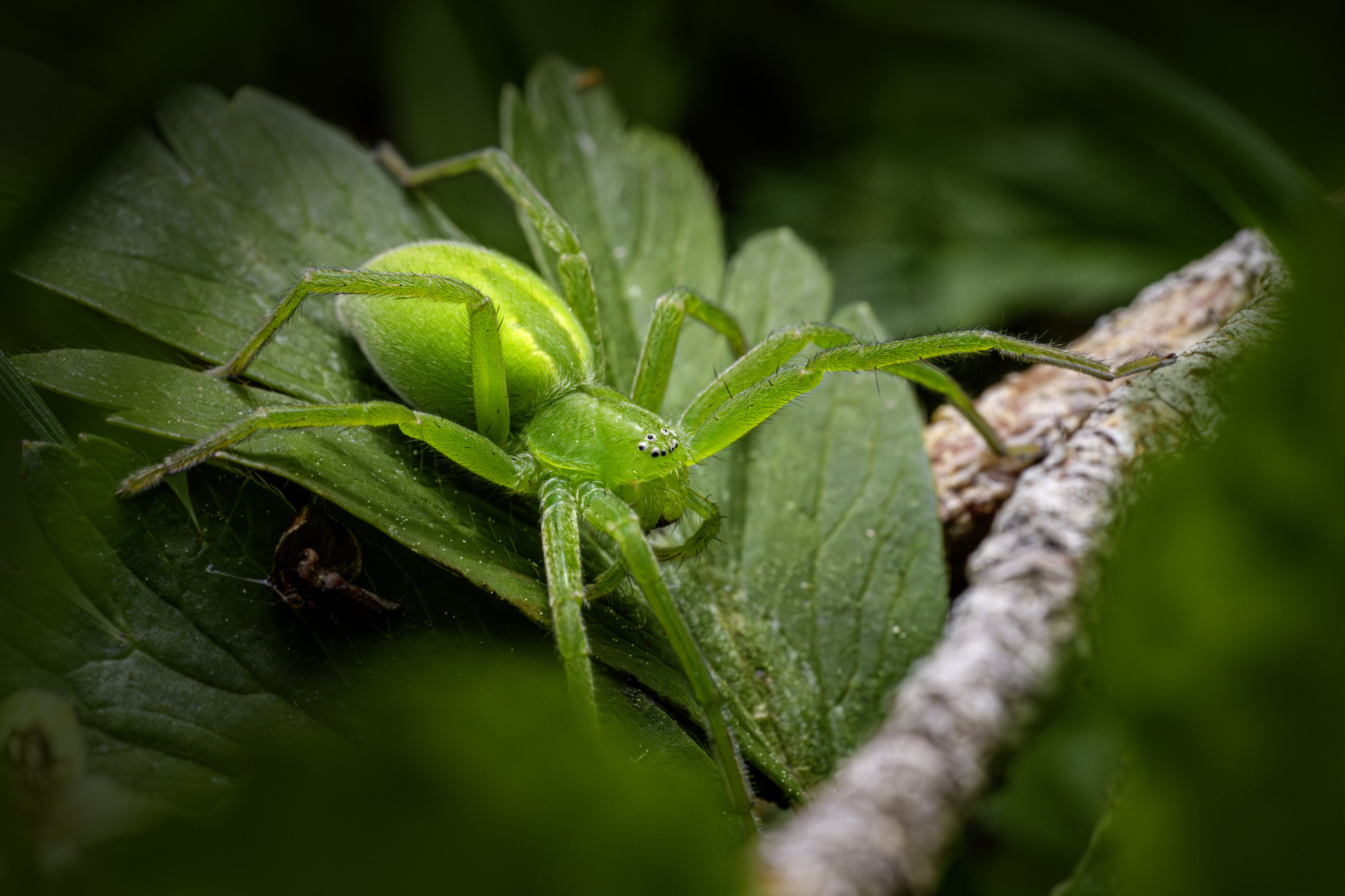The Green Huntsman Spider (Micrommata virescens) is a distinctive and fascinating species of spider. Here is a detailed overview:
Appearance
- Size:
- Females: 12 to 15 millimeters in body length.
- Males: Slightly smaller, 8 to 10 millimeters.
- Coloration:
- Both sexes are bright green, which provides excellent camouflage in their leafy habitats.
- Males may have a red stripe along the body and legs, whereas females are uniformly green.
- Body Structure:
- Flat bodies with long legs adapted for hunting and quick movement.
Habitat
- Preferred Habitats:
- Found in deciduous forests, grasslands, meadows, and gardens.
- They favor areas with dense vegetation where their green color offers the best camouflage.
- Geographic Range:
- Widespread in Europe, extending to parts of Asia.
Behavior
- Hunting and Feeding:
- Diet: Insects and other small arthropods.
- Hunting Strategy: They are active hunters, relying on their excellent vision and speed to catch prey rather than building webs.
- Activity:
- Diurnal (active during the day), which is unusual for many spider species that are typically nocturnal.
Life Cycle
- Eggs:
- Females lay eggs in a silk sac, which they guard until the spiderlings hatch.
- Spiderlings:
- Hatch from the egg sac and go through several molts before reaching adulthood.
- Adults:
- Lifespan of about one year.
Identification Tips
- Bright Green Color: The vivid green color of their bodies is the most distinguishing feature.
- Body Shape and Movement: Their flattened body and swift, agile movements are characteristic.
Ecological Role
- Pest Control: As predators, they help control populations of insects and other small arthropods.
- Prey: Serve as prey for larger predators, such as birds and small mammals.
Conservation Status
- Population: Generally stable across their range.
- Threats: Habitat loss and pesticide use can impact local populations.
Conservation Efforts
- Habitat Protection: Preserving natural habitats and maintaining areas with dense vegetation support their populations.
- Reduced Pesticide Use: Limiting pesticide application helps protect these beneficial spiders.
Human Interaction
- Beneficial Spiders: Help control insect populations, making them beneficial to gardeners and farmers.
- Non-aggressive: Generally not harmful to humans, and bites are rare and mild if they occur.
Summary
The Green Huntsman Spider (Micrommata virescens) is a striking and beneficial spider species known for its vivid green color and active hunting behavior. With a preference for leafy habitats where it can blend in, this spider plays a crucial role in controlling insect populations. By preserving natural habitats and practicing environmentally friendly gardening, we can support the health and stability of their populations.
Visited 1,383 times, 7 visit(s) today
Views: 2379
Subscribe to the newsletter:
